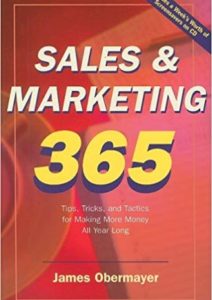Stephen Covey said, “The key is not to prioritize what’s on your schedule, but to schedule your priorities.” Of course, Covey’s message is a good one for all of us, but especially true for salespeople as pointed out in “The Power of Prioritization Report”i published by Velocify (A Sales Optimization Study).
This study is one of the most significant research studies I have read this year. And it makes the most sense of any sales tactic by any sales manager I know. Powerful words, I recognize, but I believe it. When the study was first released this past summer, SLMA Radio interviewed Jorge Jeffery, the Sr. Manager of Strategic Intelligence at Velocify, on August 5th. The program player is below. Click to listen to the interview, but this is the scoop.
The Premise
Companies that install a prioritization approach based on a sales process and contact strategy save valuable sales time and provide focus on the best activities, which greatly improves productivity and sales results.
Salespeople using a prioritized list of leads and activities were able to work more leads, and also able to increase their engagement with each lead—almost doubling their total talk time.
Company presidents and sales managers search for ways to increase sales — and here is the answer — plain and simple: Prioritization of a salesperson calling schedule. For most of the companies, the CRM system is in place but is not being used as a prioritization tool. As Covey says: ‘Most of us spend too much time on what is urgent and not enough time on what is important.
The Results (quoted from the study)
- Salespeople who use prioritization to determine their daily sales activities are able to manage more leads.
- The leads they do manage also get more attention—as seen by the number of actions and contact attempts and total talk time per lead.
- Salespeople using prioritization took 22% more actions per lead.
- The number of contact attempts per lead, one of the most important action types a salesperson can take, was 33% higher for salespeople who used automated prioritization.
- When compared to their counterparts who did not use prioritization, salespeople using prioritization were able to take 37% more actions, make 49% more contact attempts, and increase their talk time by 88%.
- Salespeople working off of a prioritized list were 19% more likely to call new leads in less than five minutes and 26% more likely to call new leads in less than one hour.
- The faster speed-to-call times result in higher contact and conversion rates for users of prioritization.
- On average, salespeople who use prioritization had 15% higher contact and conversion rates than those who didn’t use prioritization.
- The average conversion rate for companies that used prioritization was 97% higher.
- 83% of companies not using prioritization had below average conversion rates.
- Companies whose salespeople used prioritized lists more than 70% of the time had conversion rates that were 29% greater than average.
- Companies whose salespeople used prioritized lists almost exclusively (more than 90% of the time) enjoyed conversion rates that were 49% greater than average.
These are just some of the results the study quotes. What is compelling is that this was a large study of 400+ companies and a million leads. The numbers are solid. To get your own copy, go to this link.
The study recommends putting in place a prioritization strategy. (Hint: It’s more than lead scoring.) You’ll have to read the whole study (16 pages). Don’t worry. It’s simpler than you might imagine.
Editor’s note: PointClear’s president Dan McDade is a contributor to the Pipeliner CRM blog and has authored a book, The Truth About Leads.This post was written by James Obermayer, Executive Director and CEO of the Sales Lead Management Association and President of Sales Leakage Consulting. It was originally published on the PointClear blog.











